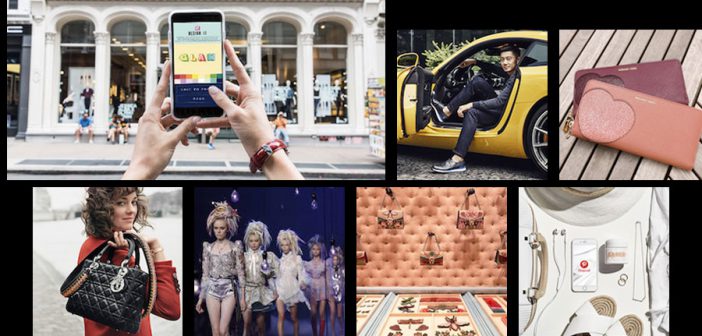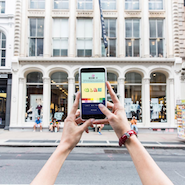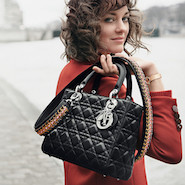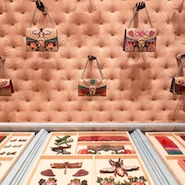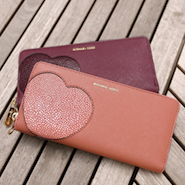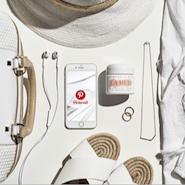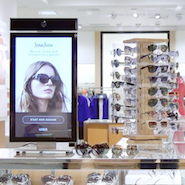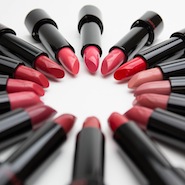Now firmly established in nearly every aspect of daily life, mobile served to enhance consumers’ purchasing journeys to drive both online and bricks-and-mortar conversions.
During the third quarter of 2016, marketers in the luxury sector developed strategies that put a mobile-first spin on communications, shopping and brand education. Chinese messenger application WeChat also had a moment in the third quarter, as brands have begun to strengthen their presence on the platform and tap into its potential.
Here are the top 10 mobile marketing efforts of the second quarter, in alphabetical order:
Berluti gets its footing on WeChat
French menswear house Berluti introduced its Fast Track footwear to Chinese consumers through a contest exclusive to WeChat.
Through a microsite on the social platform, consumers could read profiles of three local ambassadors and vote for their favorite style from the line for a chance to win a pair of shoes. Localized campaigns offer brands the opportunity to reach consumers with content and promotions that cater to them, making it all the more likely that it will resonate with the intended audience.
Berluti’s contest opened Aug. 1 and ran through Aug. 22. In addition to WeChat, Berluti promoted the initiative on Instagram, offering the chance for those who may not already have followed the brand on WeChat to get on board to participate.
From the landing page for the campaign, consumers could place their vote, watch video content, learn more about the individuals featured and take a closer look at the Fast Track shoes (see story).
Bloomingdale’s gets the word out
Department store chain Bloomingdale’s asked consumers to say anything with a user-generated content contest that solicited for text over photos.
Continuing its omnichannel efforts around its 100 Percent Bloomingdale’s campaign, the retailer hosted a mobile-only sweepstakes that centered on adding a creative touch to a word. This different approach to a social contest may have given Bloomingdale’s new insight into its audience, while spreading its visual campaign narrative through its followers.
Bloomingdale’s introduced its contest on Instagram. To participate, consumers needed to navigate to a microsite from their mobile device, as the experience only worked on mobile (see story).
Dior on sale here
With bricks-and-mortar sales continuing to decline, social selling is poised to alter the current retail model by facilitating purchases seamlessly through branded communication.
French atelier Christian Dior recently tried its hand at social selling by offering its followers on Chinese messaging and social application WeChat the opportunity to purchase a limited-edition handbag directly through a post. While not alone in its WeChat efforts, Dior has become the first luxury house to sell a high-end handbag through the app, showing its potential for direct-to-consumer sales.
The atelier had expected to keep the limited-edition handbag sale posted through Thursday, Aug. 11 for China’s Valentine’s Day, known locally as Qixi. But, by Tuesday, Aug. 9, only a day after posting the promotion, the handbags sold out (see story).
Google walks the runway
A number of fashion brands hoped to facilitate a direct connection to consumers who were searching for related information on Google.
In a new development, Google is allowing brands such as Marc Jacobs and Burberry to provide input and content that comes from the latest happenings at global fashion weeks, starting with New York, when users search for the brands. The buyable content will appear above generated search results within Google’s Web page.
Marc Jacobs, Tom Ford, Prada, Burberry and Hermès worked with Google in an experiment to provide better visibility and purchasing capability to consumers searching for Fashion Week information. Users who typed in phrases related to NYFW or partner brands on Google saw a high-quality design with pictures and video from events happening during the week (see story).
Gucci’s lexicon learnings
Italian fashion label Gucci embedded its newfound iconography into consumers’ memories through a gamification effort found within its mobile application.
Since taking the reigns at Gucci, creative director Alessandro Michele has introduced a number of motifs such as bumblebees, snakes and various types of flora that have been incorporated into his designs. Quickly becoming the house’s signature, Gucci has used Mr. Michele’s imagery throughout its campaign promotions to present consumers with a consistent brand image as the label undergoes an aesthetic transformation.
Gucci’s app now includes a gaming function inspired by Gucci’s customization program for the Dionysus handbag.
When the game begins different Dionysus handbags filter through in quick succession before pausing on a particular design. The user then has three seconds to memorize the patches before 20 seconds is put on the clock.
Players must then slide through the provided motifs and drag the correct ones into position on the handbag (see story).
#InstaKors returns
U.S. apparel and accessories label Michael Kors improved social shopping with the relaunch of #InstaKors.
First launched in 2014, Michael Kors’ #InstaKors is an innovative shopping program that allows the brand’s enthusiasts to shop directly from its Instagram postings. One of the main pitfalls of Instagram is the inability to put hyperlinks within photo captions, which has limited conversions generated from the platform, but a number of brands have found intuitive ways to get around this challenge.
#InstaKors is synced to Michael Kors’ Instagram feed, making it easier for consumers to continue on the path to purchase from discovery to transaction. The program also creates a unique shopping community for Michael Kors’ 8.2 million followers, as offers will be exclusive to #InstaKors.
Michael Kors has placed a link within its profile that redirects to the #InstaKors Web site. The landing page is a mirrored feed of images shared by Michael Kors on Instagram (see story).
La Mer pins summer fun
Estée Lauder Cos.’ Crème de la Mer digitally recreated the word-of-mouth phenomenon that made its products cult favorites through a co-branded campaign.
La Mer’s success has been built on verbal recommendations since its start, and social media has assisted in continuing the tradition, with consumers often turning to digital platforms to peer review products. The social inspiration board application Pinterest has emerged as the ideal platform for sharing favorite products and discovering new ones and has been recently outfitted with ecommerce capabilities.
The skincare brand’s “Made for Pinterest” effort was exclusive to the platform and gave consumers access to three curated sets unavailable elsewhere. Each of the sets highlights skincare trends, with one concentrating on summer skin, a second on the double cleansing method and lastly on a travel beauty routine (see story).
Neiman Marcus eyes digital solutions
Department store chain Neiman Marcus is easing eyewear purchases by enhancing its digital touchpoints through the placement of at-counter Memory Mirrors.
To implement its latest in-store technology, Neiman Marcus has partnered with MemoMi, the developer of Memory Mirror, a digital solution that has strengthened in-store trials. As consumer demand for omnichannel experiences has grown, retailers have been adapting the in-store model to tie together physical retail with digital touchpoints that bolster quality and service.
The Memory Mirror’s TryOn video lets the consumer compare different eyewear options and can be shared via email or social media. Also, the consumer can share with sales associates to spur future recommendations (see story).
Shiseido sends kisses
Japanese beauty brand Shiseido is puckering up to a younger consumer demographic via a connected digital experience.
In an effort to get “up close and personal” to millennial and Generation Z consumers, Shiseido has developed the “Rouge Rouge Kiss Me” concept. The effort, built around the brand’s Rouge Rouge lipstick line, is Shiseido’s first interactive digital campaign and was developed with Tokyo-based creatives teamLab and its talent collective including CGI animators, engineers, mathematicians, architects, editors, programmers and graphic designers.
The Rogue Rouge Kiss Me effort generated an automated message to share with a friend or loved one. The message included a personalized, animated illustration of puckered lips in a true-to-life depiction of consumers’ selected lipstick shade (see story).
Vogue snaps to it
Condé Nast’s Vogue made its fashionably late debut on Snapchat Discover with millennial-centric content to usher in new subscribers.
Personalities of the Kardashian-Jenner family have become familiar faces throughout the pages of Vogue, and the streak continues with the launch of its Discover channel on the mobile messaging application. The Snapchat channel aired for the first time on Sept. 6 with a would-you-rather interview featuring reality star Kim Kardashian West and tips from model Miranda Kerr to appeal to the app’s millennial fan base.
Vogue will air the Snapchat editions every Tuesday and Friday. The first edition featured a light-hearted Q&A with Ms. Kardashian West in which she decided on hypothetical scenarios, such as would she rather live without air conditioning or the Internet (see story).
This article first appeared in www.luxurydaily.com

